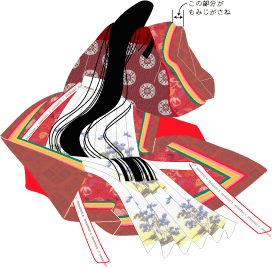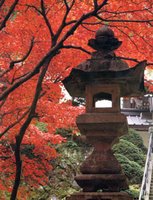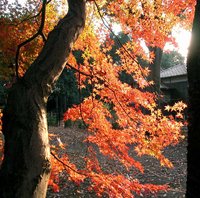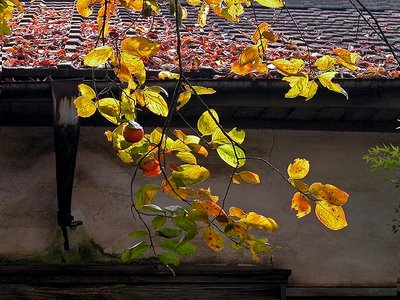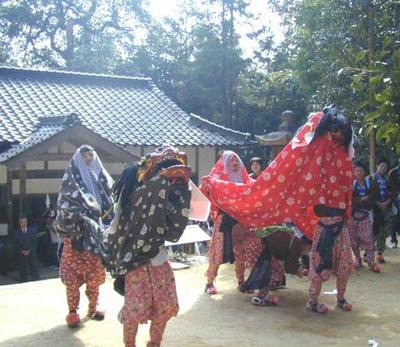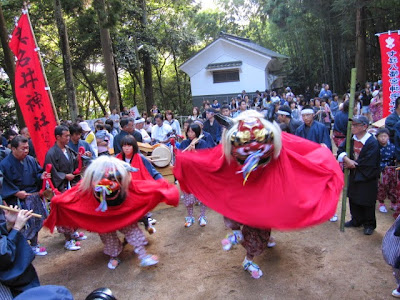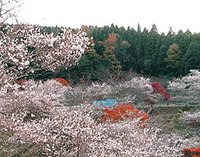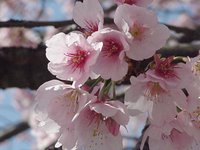:::::::::::::::::::::::::::::::::::::::::::::::::::::::::::::::::::::::::::::::::::::::::::::::::::::
Azalea (tsutsuji) ,
Rhododendron (shakunage)
***** Location: Japan, other countries
***** Season:
.. .. .. .. .. Tsutsuji: Late Spring
.. .. .. .. .. Satsuki : Mid-Summer
***** Category: Plant
*****************************
Explanation
Azalea 躑躅 つつじ Rhododendron Family.
Mountain Azaleas, yama tsutsuji 山躑躅
Clover-like Azalea, renge tsutsuki 蓮華躑躅
Morninglight Azalea, akebono tsutsuji 曙躑躅
Big Violet Azalea, oomurasaki 大紫
Lotus Azalea, renge tsutsuji 蓮華躑躅(れんげつつじ)Renge azalea
iwa tsutsuji 岩躑躅(いわつつじ) "rock azalea"
kome tsutsuji 米躑躅(こめつつじ)"rice azalea"
Rhododendron tschonoskii
mitsuba tsutsuji 三葉躑躅(みつばつつじ)"with three leaves"
Rhododendron reticulatum
goyoo tsutsuji 五葉躑躅(ごようつつじ)"with five leaves"
hododendron quinquefolium, shiro yashio シロヤシオ
mochi tsutsuji 羊躑躅(もちつつじ) Rhododendron japonicum flower
..... neba tsutsuji ねばつつじ
Unzen Tsutsuji, Mt. Unzen Azaleas, 雲仙躑躅
Yashio Tsutsuji, 八塩躑躅(やしおつつじ)from Yashio, Akita
Kirishima 霧島躑躅 (きりしま) Kirishima azalea
..... Kirishima tsutsuji霧島躑躅(きりしまつつじ)
Rhododendron obtusum
More Pictures are here:
http://www.d5.dion.ne.jp/~nasukusi/tsutsugi.files/02-5.jpg
http://www.d5.dion.ne.jp/~nasukusi/tsutsugi.files/02-2-1.jpg
http://www.d5.dion.ne.jp/~nasukusi/tsutsugi.files/02-2-2.jpg
.....
doodan no hana 満天星の花 (どうだんのはな) white enkianthus flowers
doodan tsutsuji 満天星躑躅 ドウダンツツジ White Enkianthus
Enkianthus perulatus
. . . CLICK here for Photos !
.................................................................................
kigo for mid-spring
azarea アザレア Azalea
oranda tsutsuji オランダ躑躅(おらんだつつじ)
"Azalea from Holland"
:::::::::::::::::::::::::::::::::::::::::::::::::::::::::::::::::::::::::::::::::
Tsutsuji
is the most general term in Japanese for evergreen and deciduous azaleas. One evergreen late-blossoming species called satsuki is distinguished from other azaleas, though it is also referred to as satsuki tsutsuji. Azaleas have been cultivated in Japan since the Kamakura period ( 1185-1333 ), particularly during the Edo period ( 1600-1868 ).
http://www.yoursourceinjapan.com/motifs.htm
There are many Azalea Parks in Japan. Tsutsuji kooen躑躅公園, tsutsuji-ga-oka躑躅が丘
http://www.city.tatebayashi.gunma.jp/tsutsuji/
Click on any of the pictures for a big image.
http://www.city.tatebayashi.gunma.jp/tsutsuji/02.html
Big Purple Azalea, Oo-murasaki-tsutsuji
大紫躑躅 Rhododendron pulchrum
This is the type with the biggest flowers, blooming from end of April till May. For short it is called “Oo-murasaki”, the Big Violet One”. It is part of the flower family of Hirado Tsutsuji, the Azaleas from Hirado.
Azaleas have been the subject of poetry since the times of the Manyoo-shuu 万葉集。Since the flowers are in one row, flowering one after another, the first reading of the name was “tsuzuki”, to follow, which then changed to the somehow softer pronounciastion of “tsutsuji”.
At present there are more than 300 different kinds growing in Japan.
http://www.hana300.com/oomura.html
More pictures about different types of Azalea in Tokyo.
http://www.hana300.com/tutuji1.html
http://www.hana300.com/tutuji2.html
http://www.hana300.com/tutuji3.html
http://www.hana300.com/tutuji4.html
:::::::::::::::::::::::::::::::::::::::::::::::::::::
Mountain Azaleas, Yama-tsutsuji
山躑躅 Rhododendron Kaempferi
Mostly wild in the forests of Japan.
More pictures are here:
http://aoki2.si.gunma-u.ac.jp/BotanicalGarden/HTMLs/yamatutuji.html
http://www.geocities.jp/mtmt1952/pf-2003-05-06-yamatutuji.htm
http://members.stvnet.home.ne.jp/kubookada-k/yamatutuji.html
Korean Wild Azaleas
http://aoki2.si.gunma-u.ac.jp/BotanicalGarden/HTMLs/chousen-yamatutuji.html
*****************************
Worldwide use
Bhutan
. Rhododendron
The national flower of Bhutan
:::::::::::::::::::::::::::::::::::::::::::::::::::::::::::::::::::::::::::::::::::::::::::::::::::::
USA
any species of the genus Rhododendron, North American and Asian shrubs of the family Ericaceae ( heath family) that are distinguished by the usually deciduous leaves. Azaleas are handsome shrubs with large clusters of pink, red, orange, yellow, purple, or white flowers. The better-known native American azaleas, often cultivated, include the flame azalea ( R. calendulacea ) of the Appalachians; the pinxter flower ( R. nudiflora ) and the fragrant white azalea, or swamp honeysuckle ( R. viscosa ), of the E United States; and the Western azalea ( R. occidentalis ) of California and Oregon.
Most azaleas grow in damp, acid soils of hills or mountains. The rose-purple R. canadense, a rare species with an unusually northerly range (from Pennsylvania to Newfoundland) is the rhodora immortalized by Emerson.
Many of the brilliantly flowered garden varieties are native to China and Japan, where the genus is most abundantly represented. The popular Ghent azaleas are hybrids. Dwarf azaleas are grown by florists as pot plants. Azaleas are classified in the division Magnoliophyta, class Magnoliopsida, order Ericales, family Ericaceae.
http://www.encyclopedia.com/html/a1/azalea.asp
::::::::::::::::::::::::::::::::::::::::::::::::::::::::::::::::::::::::::::::::
when the azaleas bloom here, it means the hummingbirds will have made it here, in their migration to points north to nest. they are attracted to red flowers, or to red sugar water.
first azalea
filling the hummingbird feeder
with scarlet nectar
susan delphine delaney
*****************************
Things found on the way
Beautiful drawings of flowers by Taro
http://www.geocities.co.jp/Milano-Aoyama/8403/omo.hana3.html
http://www.bonsaisite.com/satsuki.html
http://www.ncazaleafestival.org/AboutUs.htm
http://en.wikipedia.org/wiki/Azalea
http://www.usna.usda.gov/PhotoGallery/AzaleaGallery/
*****************************
HAIKU
躑躅生けてその陰に干鱈割く女
. tsutsuji ikete sono kage ni hidara saku onna .
. Matsuo Basho 松尾芭蕉 - Archives of the WKD .
:::::::::::::::::::::::::::::::::::::::::::::::::::::::::::::::::::::::::::::::::::::::::::::::::::::::
近道へ 出てうれし野の 躑躅かな
. chikamichi e dete ureshi no no tsutsuji kana .
つつじ咲いて片山里の飯白し
tsutsuji saite katayamazato no meshi shiroshi
Azaleas are blooming;
In this remote mountain village
The boiled rice is white.
Tr. Blyth
. Yosa Buson 与謝蕪村 in Edo .
:::::::::::::::::::::::::::::::::::::::::::::::::::::::::::::::::::::::::::::::::::::::::::::::::::::::
百両の 石にもまけぬ つつじ哉
hyakuryoo no ishi ni mo makenu tsutsuji kana
azaleas stand out
amid garden stones
with fantastic prices
Tr. Chris Drake
This hokku is from the fourth month (May) of 1825, when Issa was living in his hometown. Above the hokku Issa writes "spring," indicating that it is about azaleas blooming in late spring. Azaleas, a form of rhododendron, bloom just after the cherry blossoms have fallen, and their red, pink, purple, and white blossoms are in some ways even more impressive than cherry blossoms. Issa seems to have visited the garden of a rich merchant, perhaps one of his students. Or he could be remembering the garden of his rich patron and fellow-poet Seibi in Edo.
In Issa's time wealthy connoisseurs invested fortunes in their gardens as well as in vintage tea ceremony cups and other implements, and using nearly priceless stones and rocks of various sizes, shapes, and textures, often from famous places around the country, was regarded as one of the most important aspects of creating an artistic garden. The rocks and stones in the garden Issa refers to literally cost a hundred ryou each, a figure that is impossible to convert exactly into contemporary yen, since the comparative costs of various commodities differed in Issa's time. In his age one ryou was represented by one oblong gold coin, and one gold coin could buy enough rice for one person to live for a year. If Kabuki actors' salaries in Issa's time are compared to those now paid, then each garden stone costs approximately US $130,000. It seems likely, however, that Issa is using this phrase in its common meaning of "extremely expensive" or even "priceless," since the prices of hiring a master gardener and his crew and creating a unique garden were simply beyond the ability of commoners to comprehend. In spite of growing among these preposterously expensive stones and rocks, the natural beauty of the azaleas is in no way diminished, and they make considerations of price irrelevant. Issa is surely making a social comment here as well as an esthetic one.
Chris Drake
. Kobayashi Issa 小林一茶 Issa in Edo .
:::::::::::::::::::::::::::::::::::::::::::::::::::::::::::::::::::::::::::::::::::::::::::::::::::::::
out my window-
azaleas
in full bloom
Kate Steere
:::::::::::::::::::::::::::::::::::::::::::::::::::::::::::::::::::::::::::::::::::::::::::::::::::::::

岩躑躅染むる涙やほととぎ朱
iwa tsutsuji somuru namida ya hototogisu
rock azaleas
colored by his tears -
this hototogisu
Tr. Gabi Greve
Written in 寛文7年, Basho age 24.
The flowers are red like blood.
The inside of the mouth of the cuckoo is so red that it looks like blood when the bird is singing.
. WKD : Hototogisu - Little Cuckoo .
MORE hokku about tears by
. Matsuo Basho 松尾芭蕉 - Archives of the WKD .
:::::::::::::::::::::::::::::::::::::::::::::::::::::::::::::::::::::::::::::::::::::::::::::::::::::::
torch azaleas
shine naturally on
the imperial copse
http://slimey.cocolog-nifty.com/haiku/2004/04/
xxxxxxxxxxxxxxxxxxxxxxxxxxxxxxxx
azaleas bloom
by the temple door
a bell rings
Patricia A. Laurent
http://shiki1.cc.ehime-u.ac.jp/~shiki/kukai/kukai13-1.html
xxxxxxxxxxxxxxxxxxxxxxxxxxxxxxxxx
The Haiku Photo Gallery has a nice collection of Azalea Haiku.
………smiles and laughter
………the azaleas are blooming
………deep in the hills
Robert Leechford
http://home.alc.co.jp/db/owa/PH_detail?photo_sn_in=862
:::::::::::::::::::::::::::::::::::::::::::::::::::::::::::::::::::::::::::::::::::::::::::::::::::::
do not worry
about the fires of hell -
Azalea, Azalea
sorge Dich nicht
um das Höllenfeuer -
Azaleen, Azaleen
© Photo and Haiku by Gabi Greve
Read more about this impressive Buddhastatue in my garden.
xxxxxxxxxxxxxxxxxxxxxxxxxxxxx
Hana fukaku Tsutsuji miru ho o utsushikeri
My foot go into
deeper deeper
view of Azalea
Mankai no satsuki suimen ni teru gotoshi
full of Azalea
like blooming
on water
(Tr. Etsuko Yanagibori)
Hisajo Sugita (1890 ~ 1946)
http://www.big.or.jp/~loupe/links/ehisto/ehisajo.shtml
*****************************
Related words
***** Summer Azaleas, Satsuki
kigo for mid-summer
Satsuki is also a name for girls born in May.
A fine gallery of Satsuki Bonsai.
http://www.nsknet.or.jp/~ja2br/
For example, to enjoy the red leaves of tiny Azaleas.
http://www.nsknet.or.jp/~ja2br/kouyou.html
http://www.nsknet.or.jp/~ja2br/mafuyukoyo.html
Toms Bonsai Collection
http://www.nsknet.or.jp/~ja2br/fromfriend.html
:::::::::::::::::::::::::::::::::::::::::::::::::::::::::::::::::::::::::::::::::::::::::::::::::::::
***** rhododendron, shakunage
石南花 (しゃくなげ)
石楠花(しゃくなげ)、石楠(しゃくなげ)
シャクナゲ, sekinan ( 石南 せきなん)
kigo for early summer


These flowers also came from the Himalayas via China to Japan. They show a strong life energy. They come in various colors, like white,yellow, pink, orange, violet and others.
Port Townsend Rhody Festival
Saga Dawa—
rhododendrons
at their best
Karma Tenzing Wangchuk
Kigo Hotline, 2008

Saga Dawa / Vesak is an annual holiday observed by practicing Buddhists.
The exact date of Vesak varies according to the various lunar calendars used in different traditions. In Theravada countries following the Buddhist calendar, it falls on the full moon Uposatha day (typically the 5th or 6th lunar month). In China it is the fourth month in the Chinese lunar calendar, coinciding with the first full moon of that month.
The date varies from year to year in the Western Gregorian calendar but falls in April or May.
Saga Dawa Buddha's Birthday
kigo for early summer
Her wrinkled fingers
on the rudraksh rosary--
Buddha Purnima
Today is Buddha Purnima, Lord Buddha's Birth day.
© Ram Krishna Singh India 2008
. INDIA - Festivals in May/June - .
:::::::::::::::::::::::::::::::::::::::::::::::::::::::::::::::::::::::::::::::::::::::::::::::::::::
. Kirishima Shrine 霧島神宮 .
. Place names and Haiku .
[ . BACK to WORLDKIGO . TOP . ]
:::::::::::::::::::::::::::::::::::::::::::::::::::::::::::::::::::::::::::::::::::::::::::::::::::::


